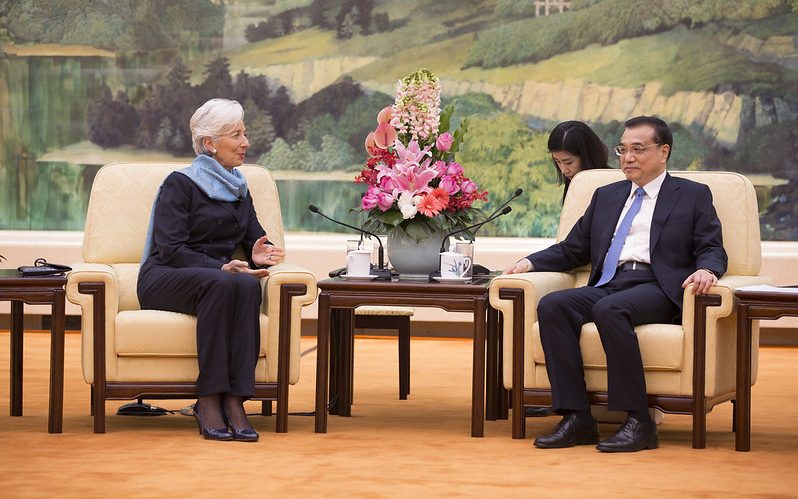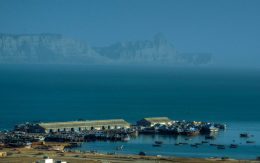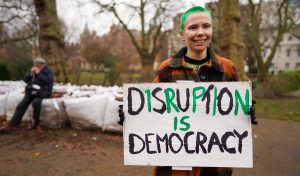This analysis was first submitted during a University course on “State and Society in Asia and Africa”.
Introduction
In 2014, China’s GDP based on purchasing power parity has overtaken that of the United States (IMF World Economic Outlook 2017). Though the US is still regarded as the world’s major economy, it is undeniable that trends are increasingly shifting away from the narrative of a post-Cold War hegemony of liberal democracies. In light of such circumstances, this analysis assesses how Chinese development finance and investment in the Global South are shaping both current geopolitics and, more specifically, the internal structure of Pakistan and Indonesia. Both countries have recently been the subject of interest for Chinese policymaking: the rising amounts of official finance, large-scale infrastructure projects and free trade agreements will undoubtedly bring substantial economic and political benefit to China. However, this may not be a mutually beneficial process. In this paper, I will argue that such trends may instead be potentially detrimental to Pakistan and Indonesia, both in economic (rising debt to GDP ratio and current account deficit, unfair competition of cheap Chinese products) and in social terms, i.e. worsening conditions for the local working-class and private sector, growing Sinophobia and deepening ethnic divisions. Albeit different in nature and extent in the two countries, tensions might exacerbate on a similar basis, namely the increasingly powerful leverage of Chinese state entrepreneurship on local Pakistani and Indonesian central governments.
In the case of Indonesia, an ethnic Chinese minority has been present in the region since the early days of Dutch colonial rule. However, the recent proliferation of Chinese investment in Southeast Asia has been highly advantageous to Chinese Indonesians, who now have the opportunity to act as intermediaries between Indonesian and Chinese institutions and businesses (Setijadi 2016: 5). This is contributing to the strengthening of their already established economic primacy, thus fomenting long-held anti-Chinese sentiments among native Indonesians. The case of Pakistan follows a different path but might lead to similar outcomes. China and Pakistan have been allies since 1951, shortly after the foundation of the PRC (Afridi and Bajoria 2010). Yet, in recent years there has been a sharp increase in economic relations between the two countries, best exemplified by the newly established China-Pakistan Economic Corridor (CPEC). Within such a framework, this article focuses on the Chinese-funded construction of a deep-sea port in Gwadar, in Pakistan’s southern province of Balochistan. Such a major project is raising considerable discontent among the Baloch population, as the widespread perception is of local manpower being neglected in favour of Chinese workers and businessmen. As a result, the Gwadar port construction has sparked renewed Baloch insurgencies in one of the most troubled provinces of Pakistan (Kupecz 2012: 103).
The analytical path of this work starts with a brief introduction of the established development assistance regime, and how this is being subverted by so-called “emerging donors” (Woods 2008: 1205). In particular, it focuses on the differences between China’s official finance and that of OECD members of the Development Assistance Committee (DAC). The analysis then introduces the “One Belt, One Road” (OBOR) project, which aims to link China to the rest of Eurasian countries through six major trade corridors: such a project is pivotal in the analysis of both case studies. The section on Indonesia will start with an account of DAC versus non-DAC official finance, to subsequently focus on Chinese on-site investments and trade agreements; it will analyse cases of discrimination or violence against Chinese Indonesians within the framework of such business relations. The section on Pakistan will similarly account for different sources of finance and major Chinese investment projects. In light of such events, it will focus on present tensions in Balochistan, which started right after the country’s independence from India and are now being extended from solely anti-central government to anti-Chinese business immigration.
Shifts in the development assistance regime: emerging donors and the rise of China
In 1972, the aforementioned Development Assistance Committee provided a detailed definition of “Official Development Assistance” (ODA) as an official (i.e. undertaken by the official sector) transaction which:
a) is administered with the promotion of the economic development and welfare of developing countries as its main objective, and b) it is concessional in character and contains a grant element of at least 25 percent (calculated at a rate of discount of 10 percent)”. (DAC 2008)
It is worth noting that the supply of military equipment and services does not count as ODA (ibid.). Official transactions which do not meet the quoted criteria fall into the Other Official Flows (OOF) category, i.e. “official bilateral transactions, whatever their grant element, that are primarily export-facilitating in purpose” (OECD 2018).
As described by Bräutigam (2011), China’s concessional loan programme includes both grants and zero-interest or fixed-rate, low-interest loans. It is administered by China Eximbank (Chexim), who stresses its concessional and development-oriented nature (China Eximbank, 2009b). However, according to recent AidData statistics on Chinese official finance between 2000 and 2014, the OOF component has been far greater than the ODA component: A total of $216.3 billion, compared to the $81.1 billion ODA commitments (AidData 2017). A 1994 banking system reform in China has led to the establishment of three major policy banks, namely the already mentioned Chexim, the China Development Bank (CDB) and the Agricultural Development Bank of China (Okazaki 2007: 13). The former two are particularly relevant for the next sections on Indonesia and Pakistan, as they mainly focus on large infrastructure projects overseas (CDB was primarily conceived for China’s own development, but it gradually increased its overseas official finance). Most loans provided by these banks, albeit often concessional in nature, fall in the OOF category as they promote Chinese trade and investment projects rather than directly fostering economic development and welfare of recipient countries (Bräutigam 2011: 757).
Concerning broader geopolitics, the sharp increase of Chinese official finance needs to be framed within the “silent revolution in development assistance” as depicted by Woods (2008). “Emerging donors” (as opposed to OECD DAC established donors) such as China, the UAE, India and Saudi Arabia among others, have been quietly seizing ever-larger shares of the foreign aid market. Emerging donors managed to take advantage of the widespread outcry against the choking policy conditionalities of the DAC by offering capital on more advantageous terms (ibid.: 1206). The emerging donors’ emphasis on non-interference in the sovereignty of recipient countries is a double-edged sword: whilst conditionality-skimmed official finance may constitute a great leap forward for recipients’ agency in their own development, it might as well overlook significant structural flaws of local governments and social structures. This might cause more harm than benefit to recipient countries, as the cases of Baloch insurgencies and ethnic divisions in Indonesia demonstrate. Furthermore, such a strategy does not necessarily ensure recipients against donor interference into their sovereignty. Increasing Chinese capital flows into Indonesian and Pakistani soil as well as consequentially increasing external debt of the two recipients, evidently still cause Chinese bargaining power within recipients’ internal policymaking to consolidate.
China’s spreading tentacles: One Belt, One Road (OBOR)
As a testimony of China’s intentions to develop ever stronger commercial and political ties with the rest of the world, the “One Belt, One Road” project constitutes an unprecedented effort to link together 65 countries, 4.4 billion people and about 40 percent of global GDP. Though barely at its inception (it was announced by President Xi in 2013), OBOR is going to draw investments worth around $1 trillion from Chinese state-owned financial institutions (Hofman 2015). OBOR presents itself as a large-scale infrastructure project, articulated in two parts. The “Silk Road Economic Belt” (SREB) is a network of roads and railways, as well as pipelines of oil and natural gas, which through six corridors aim to link China with Siberian Russia, Eastern Europe, South Asia and Indochina. The “Maritime Silk Road” aims instead to improve maritime infrastructure (such as ports and other coastal facilities) in order to establish maritime routes throughout the Indian Ocean spanning from Asia to Eastern Africa to the Mediterranean (ibid.). According to a report by the Asian Development Bank, the total infrastructure gap for Asian developing countries will amount to $22.6 trillion over the next 15 years (from 2016 to 2030), and an additional $3.6 trillion will be needed to render such infrastructures environmentally sustainable, in accordance with the Paris Climate Agreement (ADB 2017). One of OBOR’s purposes is to provide capital much needed to fill this gap.
As for official investors, both Chexim and CDB (introduced above) recently unveiled substantial investment projects: in January 2018, CDB’s chairman Hu Haibang announced at the Asian Financial Forum in Hong Kong that the CDB already invested $110 billion in loans to projects related to OBOR, and it intends to invest an additional $250 billion (Sun 2018). Additionally, the Chinese government founded a Silk Road Fund with a $40 billion endowment, partly an investment of Chexim and the CDB (Silk Road Fund 2014). OBOR is therefore a deeply globalist project, a modern Silk Road oriented towards global development by means of Chinese official finance, domestic and foreign businesses, as well as single businessmen. OBOR’s economic corridors are the paths through which a Chinese business and labour diaspora is likely to occur, and to some extent, it is already happening. In order to link the OBOR to Indonesia and Pakistan, the next two sections will focus on recent Chinese investments in Indonesia and the China-Pakistan Economic Corridor (CPEC) respectively.
Indonesia: Chinese finance, ethnic divisions and business
An East Asia Forum article notes that whilst amounts of DAC official transactions to Indonesia have been plummeting in the last decade, those from non-DAC countries have been sharply rising, especially from China (van der Eng 2017). In 2003 and 2004, the Indonesian government passed legislation stating that foreign aid should be less than three percent of the annual national budget, which explains the decision of limiting ODA inflows from DAC members (Marut 2015). As evidence of the contrast between DAC and non-DAC official finance, it is worth noting that out of all $9.3 billion of Chinese official outflows to Indonesia, only $869 million are classified as ODA (AidData 2017). In light of these statistics, it is safe to say that China-Indonesia business relations have been steadily growing in recent times. This does not only apply to official finance. As of 2017, China has overtaken Japan as Indonesia’s second-biggest source of FDI, only topped by Singapore (Maulia 2018). OBOR-related infrastructure projects such as the Jakarta-Bandung high-speed railway are a clear example of such relations: originally, the project was to be financed by Japan but was successively taken over by China. A loan issued by CDB is going to cover 75 percent of the total cost, as agreed at the OBOR Summit in Beijing in May 2017 (Negara and Suryadinata 2018: 5).
Aside from FDI and foreign aid, another relevant aspect of China-Indonesia relations is linked to multilateral trade agreements, and specifically to the Association of Southeast Asian Nations (ASEAN)–China Free Trade Agreement (ACFTA). Such an agreement was fully implemented in 2010 and caused much worry among Indonesian private actors and civil society organisations. The Indonesian market had long been flooded by cheap Chinese products, and a free trade agreement was likely to further expose domestic industries to unfair Chinese competition (Pambudi & Chandra, 2006: 104). The establishment of the ACFTA predictably raised trade between China and Indonesia, but at the same time caused a general deterioration of Indonesia’s current account deficit (CAD), further worsened by the appreciation of the Rupiah (Chandra and Lontoh 2011: 3). Just as predictably, the full implementation of the ACFTA sparked multifaceted oppositional reactions. The Indonesian Chambers of Commerce and Industry made a public statement in 2011 about how domestic industries might now struggle to survive Chinese competition; the year 2010 was characterised by mass demonstrations of mainly working-class citizens and labour associations throughout the country (ibid.: 8). As a result of this, former trade minister Chen Deming stated in the same year that China will take the responsibility to protect Indonesian small and medium-sized enterprises (SMEs) from Chinese competition. Much in the fashion of OBOR business relations, China additionally “pledged up to USD 2 billion to finance infrastructure development in Indonesia as part of the ACFTA deal with the country” (ibid.: 9). Though considered a success by the government, ACFTA negotiations have still been largely frowned upon by the Indonesian private sector.
In light of such discontent and suspicion against mainland China, it is interesting to analyse the role of ethnic Chinese Indonesians. Chinese presence in Indonesia dates back to before the arrival of Dutch colonists in the 17th century, as the Indonesian archipelago had long been part of the ancient Maritime Silk Road for its abundance of spices, especially pepper. In the early 1600s, Western Java and Jayakarta (today’s Jakarta) were under the control of the Banten sultanate. When the governor-general of the Dutch East Indies, Jan Pieterszoon Coen, seized and destroyed Jayakarta in 1619, he needed workforce to reconstruct the city (thereafter named Batavia) and turned to Chinese immigrants, who were less hostile than the indigenous population and highly skilled in commerce and city-building (Knörr 2014: 137). Today, Chinese Indonesians are believed to be around five or six million, or two to three percent of the total population (Mackie 2010).
In this regard, Charlotte Setijadi conducts a compelling analysis of what she identifies as Indonesia’s “Sinification” process. In 1967, diplomatic ties between China and Indonesia were frozen after allegations of Chinese meddling in the 1965 failed Communist coup. They were restored only in 1990 (Setijadi 2016: 6). Suharto’s New Order (1966-1998) introduced several policies of forced assimilation of Chinese Indonesians, including the imposition of Indonesian-sounding last names (ibid.: 4). Such discrimination then took the form of actual violence in the 1998 so-called “May riots”, sparked by economic hardship due to the 1997 Asian financial crisis (Collins 2002: 596). The protests, which eventually resulted in the fall of Suharto’s three-decade-long regime, extensively targeted the ethnic Chinese minority, in cases such as the serial gang-raping of mostly Chinese Indonesian women (Coppel 2008: 122).
Nonetheless, the fall of Suharto’s New Order brought a progressive flourishing of Chinese Indonesian culture. Chinese organisations, media and language have since then been on the rise in Indonesia, and Mandarin-learning by both Chinese and pribumi (i.e. indigenous) Indonesians has sky-rocketed. Chinese Indonesians now find themselves in a unique position regarding the strengthening ties between the two major Asian countries, in that they can (and do) act as intermediaries between Indonesian and mainland Chinese businesses (Setijadi 2016: 6). The progressive strengthening of Chinese Indonesians though should not necessarily be regarded as positive: Setijadi also reports that “[…there are] frequent attacks in the media by various right-wing and Islamist pribumi groups that accuse Chinese Indonesian businessmen and politicians of being China’s puppets in Indonesia” (ibid.: 8). The most relevant example would be the arrest of former governor of Jakarta Basuki Tjahaja Purnama (Ahok), an ethnic Chinese, who has been sentenced to two years of imprisonment in 2017 for having spoken about what he believed to be a misinterpretation of a Koranic verse (Stewart and Harsono, 2018). Although a matter of religion more than ethnicity, Ahok’s arrest falls within the wave of discrimination that never really stopped after the 1998 May riots.
Chinese Indonesians are what Amy Chua refers to as “market-dominant minority” (Chua 2004: 6). However, given their limited numbers, they have always been politically weak in Indonesia: hence the claims of the Ulema Council that “a non-Muslim should not become a leader of the capital of the world’s largest Muslim majority nation” regarding Ahok’s election (Holmes 2016). It is clear that the market-dominant nature of the ethnic Chinese would not be as strong without the role of mainland China. As business relations between China and Indonesia grow in magnitude, anti-Chinese tensions are likely to grow accordingly. Given the overwhelming disproportion between their share of Indonesia’s population and their economic power, Chinese Indonesians in the future are likely to spark ever-worsening reactions from the working class, the threatened SMEs and the (often, but not necessarily, Islamist) anti-establishment populist rhetoric.
Pakistan: divisive patterns of infrastructure-building
Official finance towards Pakistan follows similar patterns to that towards Indonesia, in that both countries are increasingly turning away from the OECD in favour of China and other emerging donors. On Jan 4th, 2018, the US State Department announced the decision to cut $2 billion worth of military aid to Pakistan. As a result, Pakistan’s defence minister declared that Pakistan will look towards Russia, China and Europe, as the US has chosen “castigation over cooperation” (Peel and Stacey 2018). The decision taken by the Trump administration is rooted in the claims that Pakistan, though it received $33 billion in US aid since the early 2000s, has done little to get rid of the threats posed by Islamic fundamentalism in the region, and is rather providing a “safe haven” for members of the Taliban or the Haqqani network (DW 2018). Being a traditional ally of Pakistan, China has exploited such tensions to consolidate its sway over Islamabad, which had already been growing steadily in recent years: between 2000 and 2014, Pakistan has been receiving a staggering $16.3 billion in Chinese OOF (second major recipient after Russia) and other $2.4 billion in Chinese ODA (AidData 2017). The 2013 establishment of the China-Pakistan Economic Corridor (CPEC) will most likely accelerate the growth of on-site Chinese investment in the coming years.
The CPEC, one of the main parts of the “One Belt, One Road” project, is a $62 billion-worth investment project “[…]ranging from roads, energy projects, storage facilities, port construction, urban design [and] transport initiatives” (Chohan 2017: 1-2). In 2015, China announced it would finance $11 billion concessional loans at the very low interest rate of 1.6 percent (Ashraf 2016). Such loans will be financed by (among others) the aforementioned CDB, Chexim and Silk Road Fund. The CPEC is of enormous importance both for Pakistan and China: it would serve Pakistan to alleviate its energy crisis and fill the infrastructure gap, and it would also serve China by providing its tradable goods access to the Arabian Sea (and thus to a new maritime route, much closer to Africa and the Mediterranean). The provinces of Balochistan and Gilgit-Baltistan, both culturally unique and rather detached from the central government (for different reasons) are the two extremes of the CPEC, one facing the Arabian Sea and the other bordering the Xinjiang province in western China. Along with the other three provinces (Sindh, Punjab and Khyber Pakhtunkhwa) they are currently hosting all the infrastructure projects which will amount to the 2700-kilometre corridor linking East and South Asia. The most ambitious of such projects is the construction of a deep-sea port in the city of Gwadar, Balochistan: announced in 2001, it has now been integrated into the CPEC and aims to “transform the small fishing village of Gwadar into a major transportation hub on par with Dubai” (Kupecz 2012: 103). As for 2009, China already paid $198 million of the total cost of $248 million and provided 450 engineers and workers (A. Khan 2009: 1078).
The extent of such project’s potential damage on Pakistan needs to be understood within the frame of the Baloch insurgencies against the Punjabi-led central governments, which have been occurring since shortly after the state’s independence from the British Raj in 1947. A very fragmented region itself, Balochistan is inhabited by numerous tribal groups, often inimical to each other; Balochs always denounced lack of representation in the state’s main institutions and policymaking, even though tribal internal conflicts and divergence have made it difficult for Baloch people to agree on specific claims of provincial autonomy and ownership of local resources. Furthermore, the Punjabi-led government has in the past conducted a sort of intra-national “divide and rule” policy, playing one tribe against the other. The 2004 insurgency, however, found local tribes relatively united in their struggle (A. Khan 2009: 1087). All such information predates the establishment of the CPEC, but it is useful to understand the very unstable grounds on which such ambitious investments have been rooted. Furthermore, the CPEC might be detrimental not only to Pakistani minorities but to the Pakistani economy altogether: Federal Minister for Ports and Shipping Mir Hasil Bizenjo, under pressure from several members of the Senate of Pakistan, revealed in November 2017 that the Gwadar Port Authority will only be entitled to 9 percent of the port’s revenues in the next forty years, the remaining 91 percent going to Chinese investors (I. Khan 2017). The CPEC is also probably going to demand high amounts of debt servicing in the long run: Pakistan’s persistent current account deficit (i.e. imports exceeding exports) is likely to hinder the country’s ability to meet its external debt obligations with China, due to insufficient foreign exchange reserves (Rana 2018).
In 2006, the Hindustan Times published an article describing phenomena of growing Sinophobia in Balochistan, which took place following “local perceptions of Chinese complicity in the suppression of a Baloch youth movement for autonomy” (Raman 2006). Plans of an economic corridor linking Xinjiang with the Arabian Sea have been in the mind of Chinese policymakers for more than a decade. The establishment of the CPEC reportedly caused a 41 percent growth of Chinese immigration to Pakistan from 2015 to 2017. Furthermore, there has already been a case of two Chinese nationals being murdered in Quetta (Reuters 2017). Though this might have been an isolated case, factors like rising Chinese immigration, the proliferation of military posts to provide security to Chinese labour, marginalisation of the local workforce in favour of Chinese nationals, could cumulatively bring to the future escalation of violence. Such violence would not only be detrimental to ethnic minorities in Pakistan. It would weaken state infrastructural power over its territory, as well as foster grassroots anti-establishment and Sinophobic upheavals. This might in turn raise the risk (and thus the interest rate) of Chinese investments, sinking the whole country further into debt.
Conclusion
In a Carnegie Council interview on February 28th, 2018, Human Rights Watch researcher Andreas Harsono describes Indonesia as “going down the Pakistan route” in terms of minority discrimination; he cites the National Commission on Violence Against Women’s statement of there being 422 discriminatory regulations against minorities in Indonesia, as for 2016 (Stewart and Harsono 2018). Specifically, he mentions the blasphemy law, which exists in both countries and is regularly enforced, with varying degrees of punishment. In Pakistan it can amount to the death penalty, and is mainly directed at protecting Islam; in Indonesia, it is milder (though, according to Harsono, progressively hardening) and also protects the other five religions (namely Catholicism, Protestantism, Buddhism, Hinduism, and Confucianism). Pakistan and Indonesia are two extensively populated Muslim-majority countries: mutatis mutandis, they also exhibit varying degrees of social fragmentation, ethnic conflict and religion-based violence (as shown by several examples mentioned above).
However, in terms of Chinese labour immigration, it could also be argued that Pakistan is going down the Indonesian route. The further implementation of the CPEC might lead to the consolidation of an established market-dominant Chinese minority, at the expenses of the local population. Such processes may well lead to further fragmentation and conflict, thus jeopardising the entire project of Pakistan’s infrastructural modernisation. Both countries have been experiencing persistent current account deficit and rising government debt as a percentage of GDP in the last decade; Indonesia currently holds a $6 billion CAD and a low (but rising) debt/GDP ratio of 29.2 percent, whereas Pakistan holds a $4 billion CAD with a much higher (and rising) debt/GDP ratio of 71.2 percent (Trading Economics 2018). Given such numbers, especially in the case of the more indebted Pakistan, OBOR might not turn out to be quite like the “modern Marshall Plan” (Chohan 2017: 2) many expected it to be. On the other hand, as it has been argued in this analysis, OBOR’s spreading tentacles (and Chinese investments in Pakistan and Indonesia specifically) might foster ethnic divisions in the two countries, privileging Chinese labour (either indigenous, such as in Indonesia, or foreign, such as in Pakistan) and leaving out other indigenous population, be it ethnic minorities (Balochs in Pakistan) or simply SMEs and indigenous non-Chinese private sector (in Indonesia). Without a welfare campaign to accommodate the needs of such losers of Chinese economic diplomacy, the results could be dire for both countries at large.
Sources
Afridi, J. and Bajoria, J. (2010). China-Pakistan Relations. Council on Foreign Relations. [online] 6 July. Available at: goo.gl/uE8qB6 [Accessed 21 Mar. 2018].
Ashraf, M. (2016). False propaganda against CPEC. Pakistan Today [online] 15 November. Available at: goo.gl/zCYYLb [Accessed 21 Mar. 2018)
Asian Development Bank. (2017). Meeting Asia’s Infrastructure Needs. ADB edn, Manila.
Bräutigam, D. (2011). Aid ‘With Chinese Characteristics’: Chinese Foreign Aid and Development Finance Meet the OECD-DAC Aid Regime. Journal of International Development, 23(5), pp. 752-764.
Chandra, A. and Lontoh, L. (2011). Indonesia – China Trade Relations: The deepening of economic integration amid uncertainty?. International Institute for Sustainable Development, pp. 1-15.
China Eximbank. (2009b). Chinese Government Concessional Loan. [online] Available at: goo.gl/cMspj4 [Accessed 21 Mar. 2018].
Chohan, U. (2017). What Is One Belt One Road? A Surplus Recycling Mechanism Approach. SSRN [online] Available at: goo.gl/HxjcYn [Accessed 21 Mar. 2018].
Chua, A. (2004). World On Fire: How Exporting Free Market Democracy Breeds Ethnic Hatred and Global Instability. New York: Anchor Books.
Collins, E. (2002). Indonesia: a Violent Culture?. Asian Survey, 42(4), pp. 582-604.
Coppel, C. (2008). Ch. 7: Anti-Chinese Violence in Indonesia after Soeharto. From Ethnic Chinese in Contemporary Indonesia, edited by Leo Suryadinata. Institute of Southeast Asian Studies, 2008.
Development Assistance Committee (2008). Is It ODA? Factsheet. Organisation for Economic Co-operation and Development. [online] Available at: goo.gl/7XghBH [Accessed 21 Mar. 2018].
Dharma Negara, S. and Suryadinata, L. (2018). Jakarta-Bandung High Speed Rail Project: Little Progress, Many Challenges. ISEAS – Yusof Ishak Institute, 2, pp. 1-8.
Dreher, A., Fuchs A., Parks, B. Strange, A., and Tierney, M. (2017). Aid, China, and Growth: Evidence from a New Global Development Finance Dataset. AidData Working Paper #46. Williamsburg, VA: AidData.
DW. (2018). US suspends ‘security assistance’ to Pakistan after Donald Trump calls it terrorist ‘haven’. Deutsche Welle [online] 4 January. Available at: goo.gl/RnHP92 [Accessed 21 Mar. 2018].
Holmes, O. (2016). Jakarta’s violent identity crisis: behind the vilification of Chinese- Indonesians. The Guardian [online] 25 November. Available at: goo.gl/mxwhEf [Accessed 21 Mar. 2018].
Hofman, B. (2015). China’s One Belt One Road Initiative: What we know thus far. World Bank [online] 12 April. Available at: goo.gl/zdLLUi [accessed on 21 Mar. 2018].
IMF. (2017). World Economic Outlook (WEO), October 2017. International Monetary Fund.
Khan, A. (2009). Renewed Ethnonationalist Insurgency in Balochistan, Pakistan: The Militarized State and Continuing Economic Deprivation. Asian Survey, 49(6), pp. 1071-1091.
Khan, I. (2017). China to get 91pc Gwadar income, minister tells Senate. Dawn [online] 25 November. Available at: goo.gl/QLUpjt [Accessed 21 Mar. 2018].
Knörr, J. (2014). Creole Identity in Postcolonial Indonesia. Berghahn Books.
Kupecz, M. (2012). Pakistan’s Baloch Insurgency: History, Conflict Drivers, and Regional Implications. International Affairs Review, 20(3), pp. 95-110.
Mackie, J. (2010). How many Chinese Indonesians?. Bulletin of Indonesian Economic Studies, 41(1), pp. 97-101.
Marut, D. (2015). How will a 40 percent cut in Australian aid affect Indonesia?. The Conversation [online] 15 May. Available at: goo.gl/vuMC4p [Accessed 21 Mar. 2018].
Maulia, E. (2018). China becomes Indonesia’s No. 2 investor with infrastructure drive. Nikkei Asian Review [online] 1 February. Available at: goo.gl/HTWXXG [Accessed 21 Mar. 2018].
OECD (2018). Other official flows (OOF) (indicator). doi: 10.1787/6afef3df -en [online] Available at: goo.gl/5CTgw8 [Accessed on 21 Mar. 2018].
Okazaki, K. (2007). Banking System Reform in China: The Challenges of Moving Toward a Market-Oriented Economy. RAND National Security Research Divison.
Pambudi, D. and Chandra, A. (2006). The impacts of the ASEAN-China Free Trade Agreement on the Indonesian economy. Jakarta Pusat: Institute for Global Justice.
Peel, M. and Stacey, K. (2018). Pakistan turns to Russia and China after US military aid freeze. The Financial Times [online] 28 January. Available at: goo.gl/761vWW [Accessed 21 Mar. 2018].
Raman, B. (2006). China’s Balochistan problem. The Hindustan Times. [online] 31 August. Available at: goo.gl/Yv4HFd [Accessed 21 Mar. 2018].
Rana, S. (2018). Pakistan’s external debt, liabilities touch $89 billion. The Express Tribune [online] 16 February. Available at: goo.gl/VAoQ2c [Accessed 21 Mar. 2018].
Reuters (2017). Thousands of Chinese nationals arriving in Pakistan. The Express Tribune [online] 28 August. Available at: goo.gl/4AYpiQ [Accessed 21 Mar. 2018]
Setijadi, C. (2016). Ethnic Chinese in Contemporary Indonesia: Changing Identity Politics and the Paradox of Sinification. ISEAS Yusof Ishak Institute, 12, pp. 1-11.
Silk Road Fund (2014). [online] Available at: goo.gl/DWaw5Q [Accessed 21 Mar. 2018].
Stewart, D. and Harsono, A. (2018). Is Indonesia Becoming Like Pakistan?. Carnegie Council for Ethics in International Affairs. [online] 28 February. Available at: goo.gl/PWR8mf [Accessed 21 Mar. 2018].
Sun, N. (2018). China Development Bank commits $250bn to Belt and Road. Nikkei Asian Review [online] 15 January. Available at: goo.gl/UjrKpV [accessed on 21 Mar. 2018].
Trading Economics (2018). Trading Economics Application Programming Interface (API) [online] Available at: goo.gl/L6NbCL [Accessed 21 Mar. 2018]
Van der Eng, P. (2017). Why does Indonesia seem to prefer foreign aid from China?. East Asia Forum [online] 2 December. Available at: goo.gl/FmRQH1 [Accessed 21 Mar. 2018].
Woods, N. (2008). Whose aid? Whose influence? China, emerging donors and the silent revolution in development assistance. International Affairs, 84(6), pp.1205-1221.









Be First to Comment